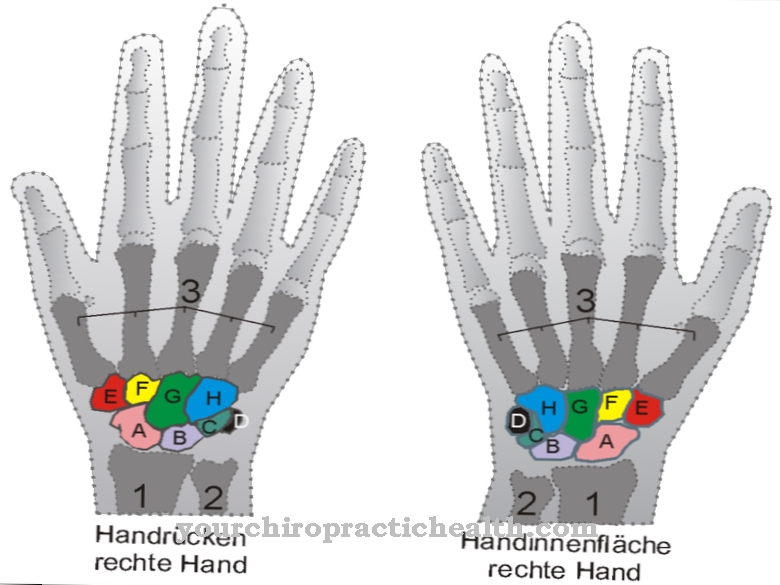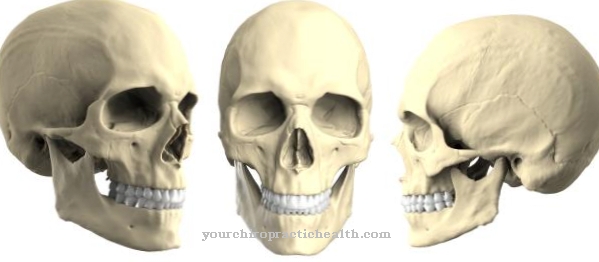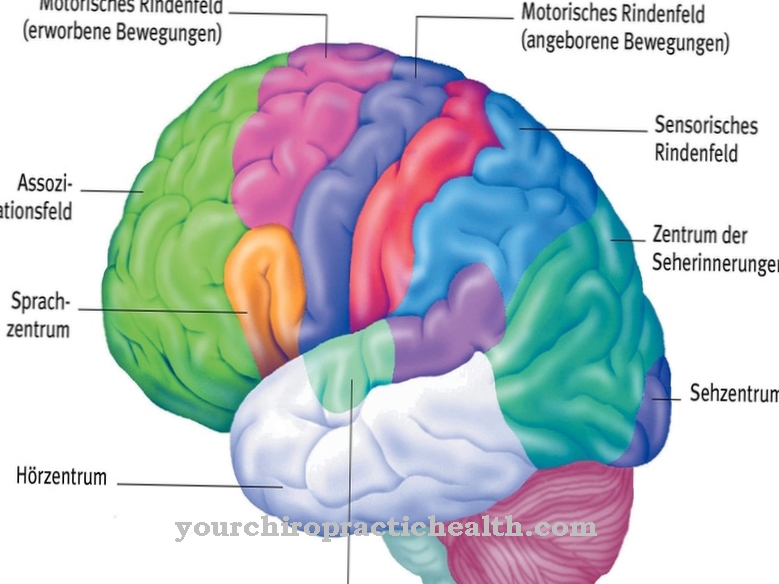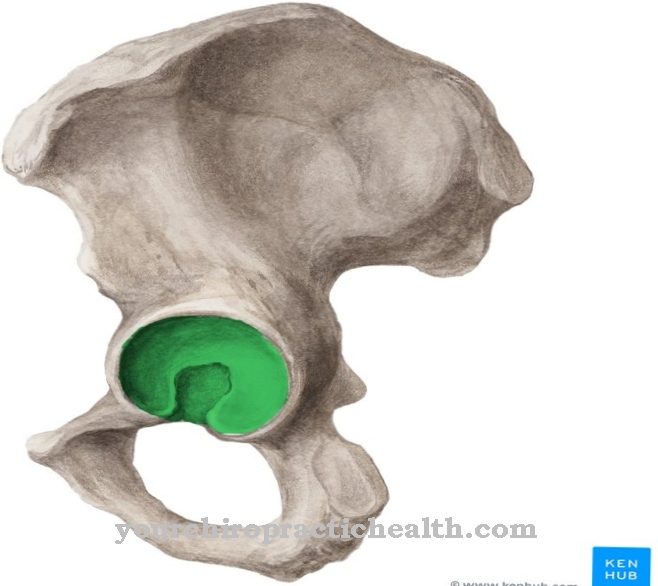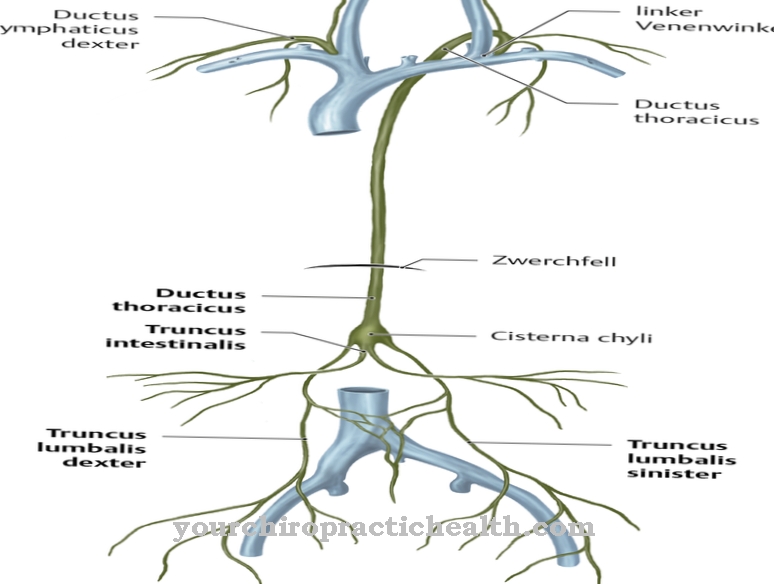As Gametes the male and female sex or germ cells capable of fertilization are called.
Your diploid (double) chromosome set was reduced to a haploid (single) set by previous meiosis (meiosis), so that after fertilization, the union of a female and a male gamete, a diploid cell with a double set of chromosomes is created. The female gamete corresponds to the fertilizable egg and the male gamete to the fertilized sperm.
What is a gamet?
Fertile female or male sex or germ cells are called gametes. In humans, as in all other mammals, male and female gametes look very different. The female gamete is the fertilizable egg and the male gamete is the fertilized sperm.
Despite their very different looks and sizes, their common feature and characteristic is their haploid (simple) set of chromosomes. The simple set of chromosomes is created by previous meiosis (meiosis) of the primordial germ cells, which are separated from the somatic body cells at a very early stage, even during the embryonic phase. The facility for the formation of eggs, including the first part of meiosis, begins in the embryonic phase and is completed shortly after birth. This means that after sexual maturity women have only a limited supply of fertilizable gametes, even if the total supply of around 500 ovulating eggs may appear generous.
In men, after puberty, meioses of the primordial germ cells take place throughout their entire life, so that sperm cells capable of fertilization are always "fresh" produced and replenished. After the union of a female and a male gamete, i.e. a female egg with a male sperm, the union of the two haploid chromosome sets creates a diploid cell, the zygote. It embodies the primordial cell from which the genetically preprogrammed individual is created through countless divisions (mitoses) and cell differentiations.
Anatomy & structure
The female gamete, the egg cell, has a spherical shape with a diameter of 0.12 to 0.15 millimeters. The egg cell is surrounded by a proteinaceous coating that plays an important role in the docking of a sperm.
Between the envelope layer and the cell membrane of the egg cell is the perivitellin space, in which there are three so-called polar bodies, each with a haploid set of chromosomes. The polar bodies arise during the first and second meiosis, are no longer needed by the body and are therefore broken down again later. They play a role in in vitro fertilization because their chromosome set can be examined for possible genetic damage before the egg cell containing the identical chromosome set is implanted. The egg cell's cytoplasm contains organelles (such as mitochondria) and lysosomes, which contain nutrients for post-fertilization.
The nucleus, which is also located in the egg, contains a complete set of haploid chromosomes. The male gamete, also known as the sperm or seminal filament, is much smaller than the egg cell and consists of a head with a nucleus and also a haploid set of chromosomes and a middle section or neck with attached mitochondria and the subsequent flagella, which ensures that the sperm can move independently. On the head there is the so-called acrosome, the head cap, which contains enzymes to penetrate the egg membrane.
Function & tasks
Gametes are used for so-called sexual reproduction, which enables the genes to be recombined within a population, so that different individuals can develop in the same population. In combination with possible gene mutations that arise spontaneously during cell division or due to mutagens, a population or society can adapt to changed environmental conditions. If certain traits are advantageous in a changed environment, a so-called gene shift occurs within the population in the course of many generations in favor of the advantageous trait.
This possible adaptation process is so essential for survival and of such great advantage that it outweighs the disadvantages of lethal mutations that can also occur. In contrast to this is the so-called asexual or asexual reproduction by sprouting or similar processes. It is a matter of cloning, the production of genetically identical individuals whose development is associated with significantly fewer risks than sexual reproduction, but does not offer any possibilities of adaptation to a changing environment. When the male sperm fuses with the female egg, there is one special feature to consider.
When entering the egg, the sperm loses the neck and the flagella, both of which remain outside the egg membrane, and with it the male mitochondria. This means that only the DNA in the cell nucleus is inherited from the father's side. The independent mitochondrial DNA is inherited exclusively from the mother's side.
Diseases
Illnesses, complaints and dysfunctions can already arise during the formation of the gametes, during gametogenesis. A spontaneous mutation can occur during the meiosis or an error can occur in the division of the chromosomes.
For example, parts of a chromosome may be missing or a chromosome may appear twice in the haploid set, so that a so-called trisomy occurs after the fusion. Trisomy 21, also known as Down syndrome, in which the diploid chromosome set contains a triple chromosome 21, is relatively well known. Turner syndrome is caused by the lack of an X chromosome in the diploid set of chromosomes. In such cases it is a gametopathy, a germ line damage, which corresponds to a previous damage to the female egg or the male sperm.
As a rule, incorrect chromosome divisions during meiosis are lethal for the successor cells, especially for the cell that is missing an entire chromosome or parts of one chromosome. This means that they are usually not viable and no new individual can arise.

